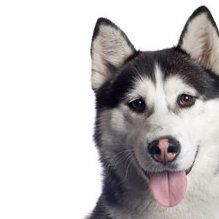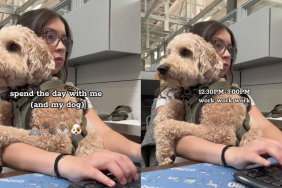A Golden Retriever greets his boy after school, a tennis ball in his mouth, ready for a game of fetch. An English Springer Spaniel leaps forward to bring back a fallen bird. A Pomeranian snuggles with his owner, who’s laid up with a broken back. A Doberman Pinscher accompanies his owner as she jogs through the park at night.
For as long as we’ve known them–15,000 years or more–dogs have been our assistants, hunting buddies, protectors, and friends. How did a single species develop so many talents? Why have dogs, more than any other species, become our partners in almost any endeavor?
The answer lies not only in their plasticity–the range of sizes and shapes they come in–but also in human creativity. Dogs are designer animals, cut from the fabric of our needs and fashioned to suit almost any purpose.
Early dog pleased early man
In the beginning, dogs barked an alarm when wild animals or strangers approached the outskirts of the human settlements where they lived, scavenging meals from the communal garbage dump. They kept down vermin by ridding the area of rotting food. Dog’s first job, then, was to act as a combination security and waste management system. Since both services were valued by early humans, their presence was tolerated.
We don’t know how dogs made their way from the farthest edges of village life to the greater warmth and comfort of the Mesolithic hearth, but move they did. Although early people didn’t know anything about genetics or heritable traits, they probably kept the puppies with the loudest and most insistent barks, the better to alert them to predators.
Breeding becomes a hobby
Breeding as we know it today is a fairly recent invention. For the most part, it wasn’t until the 19th century that people began to keep records of canine bloodlines and to classify dogs into specific breeds rather than generic types such as hunting dog, hound, herding dog, or lap dog. Breeders ranged from noblemen creating a better retriever to shepherds refining herding ability for their particular livestock.
Today, we live with more than 400 dog breeds recognized by kennel clubs around the world, which govern dog shows, field trials, hunt tests, herding tests, and other measures of quality and working ability. While many of those dogs still perform the work for which they’ve been bred for centuries or even millennia, the majority of them live with us as companions, perhaps the most important job of all.
Plenty of variety within a breed
Choosing a purebred is the best way to know what you’re getting in a dog as far as looks and temperament, although it’s never an ironclad guarantee. Each breed is known for a particular temperament, but even within breeds we find variety. The Rottweiler can be clownish or commonsensical, the Papillon intensely energetic or lovingly laidback, the Greyhound friendly or retiring.
Those differences can be related to how frequently he was handled as a very young puppy, how well you socialized and trained him after you brought him home, as well as the genetic luck of the draw.
Your dog will be as individual as you are, a radical notion to some people, but one that’s essential to the success of your relationship. If you accept it, you’re sure to be rewarded.
Whatever dog you choose, and wherever you acquire him–reputable breeder, animal shelter, or breed rescue group, the two of you will be a new link in a chain of friendship stretching back thousands of years.









